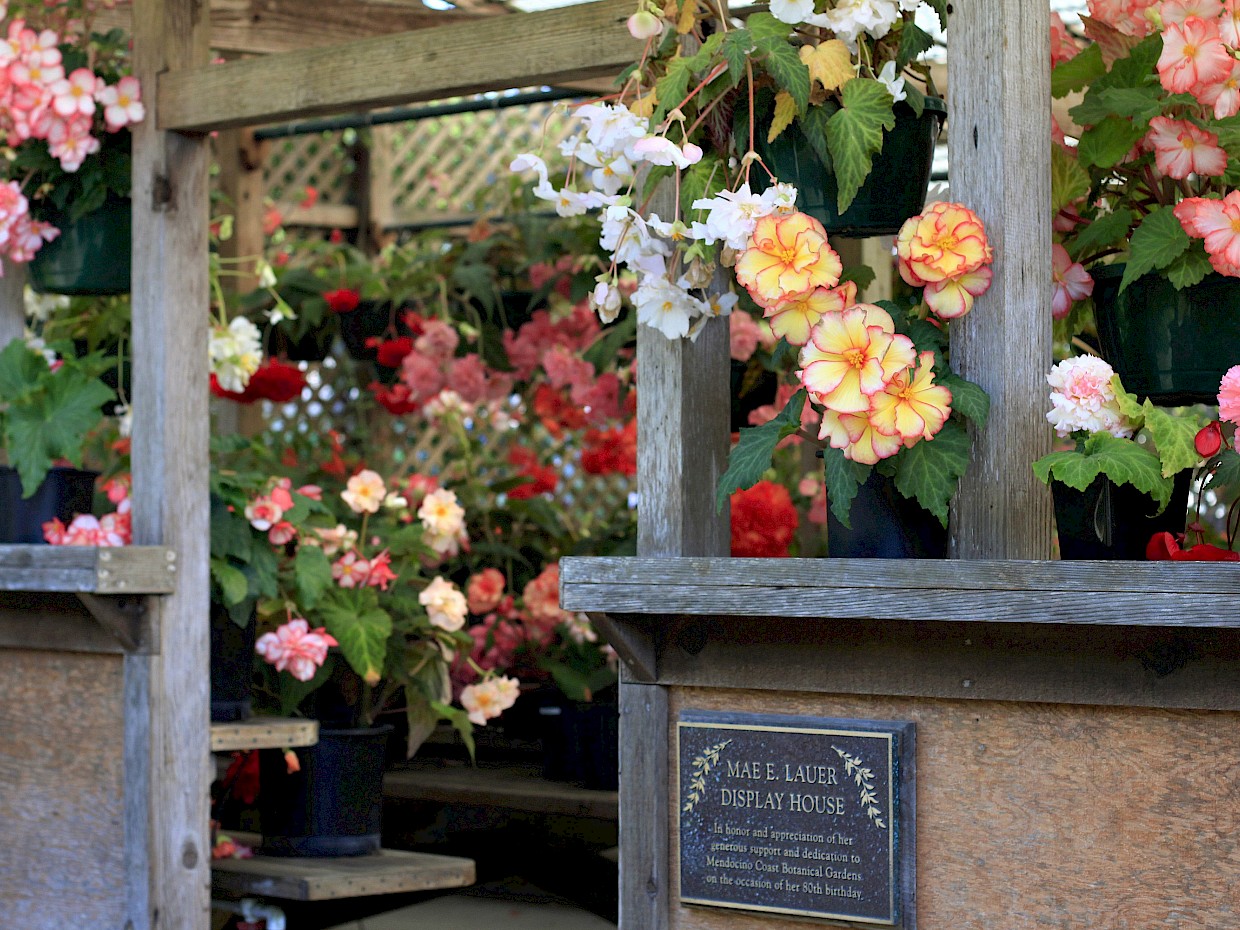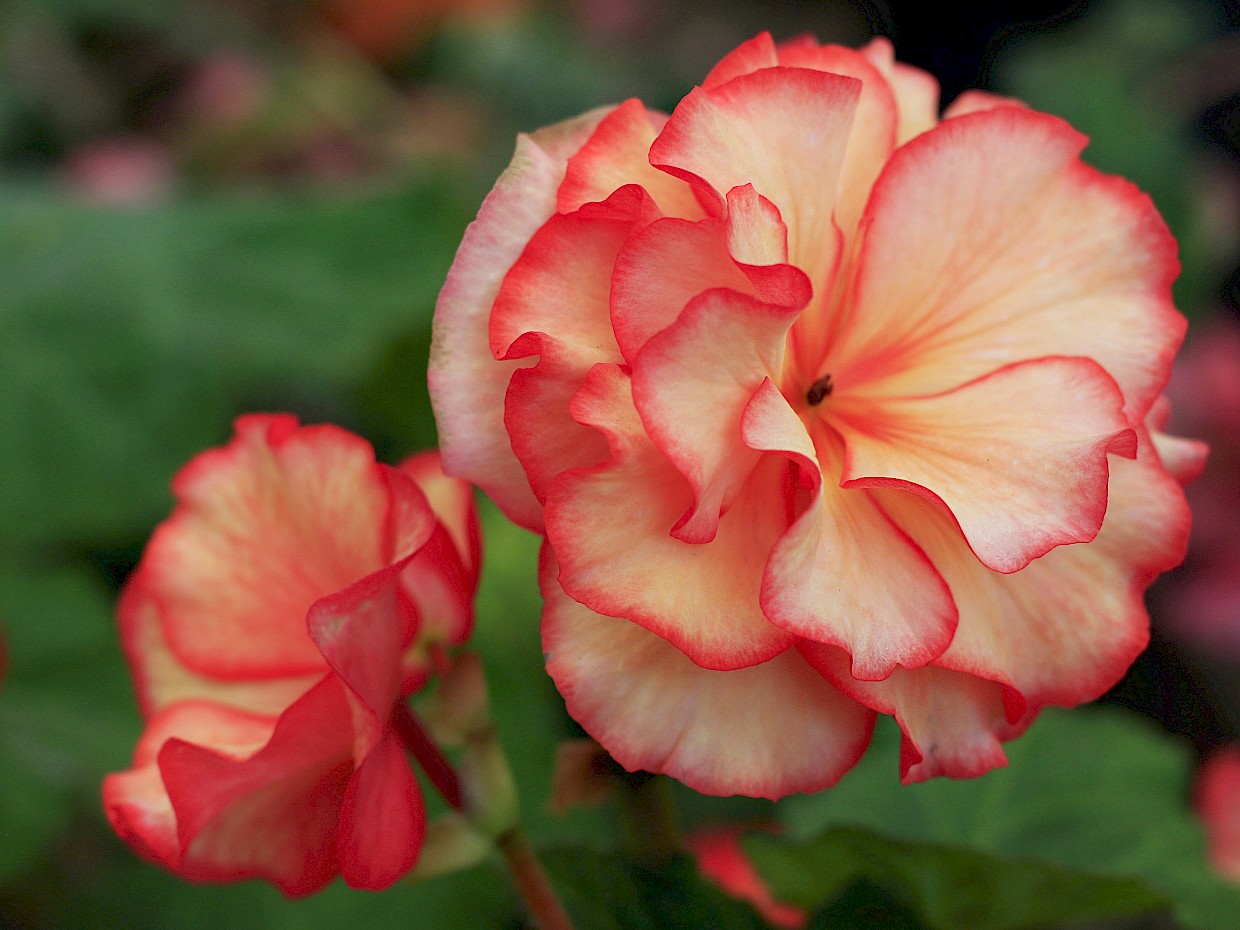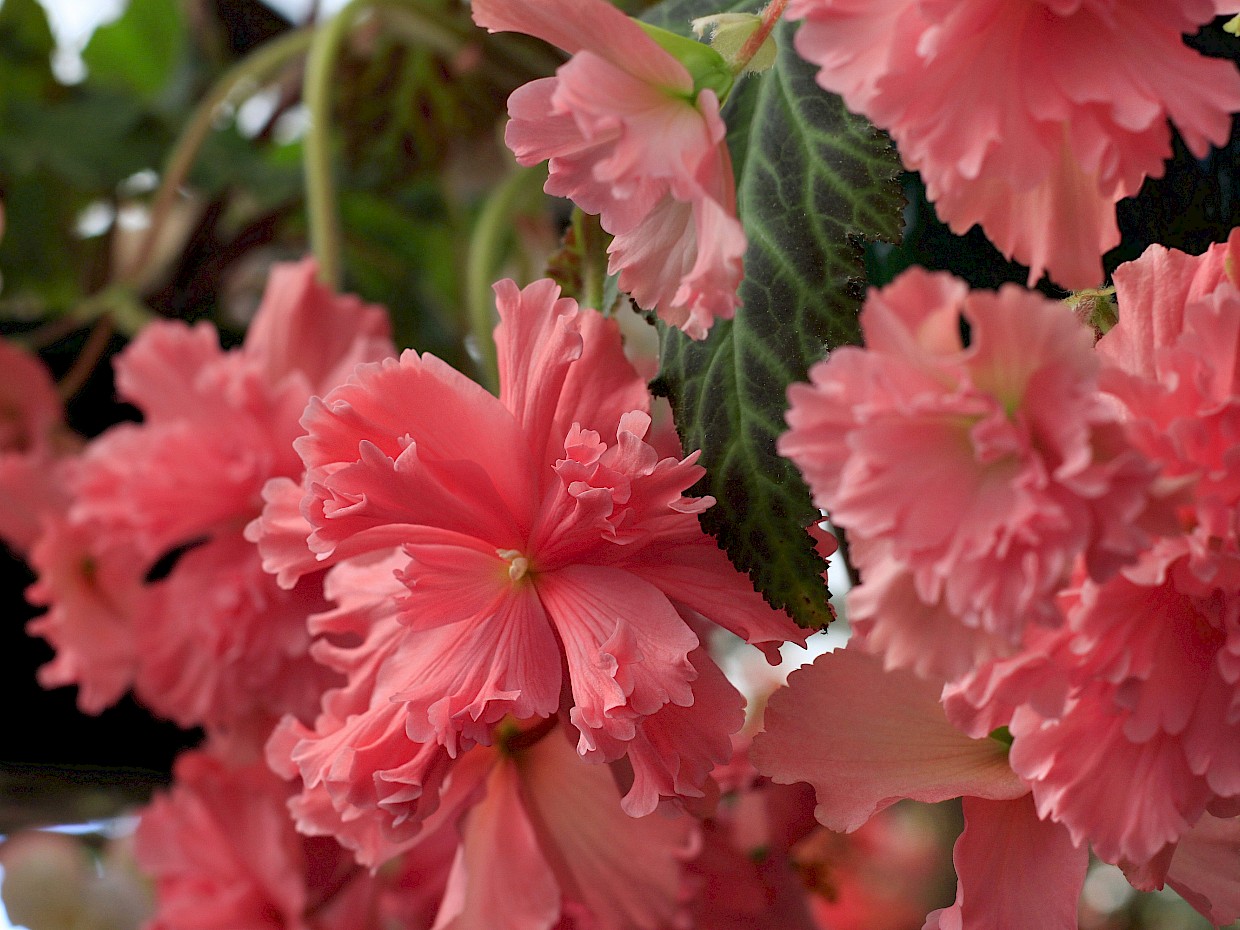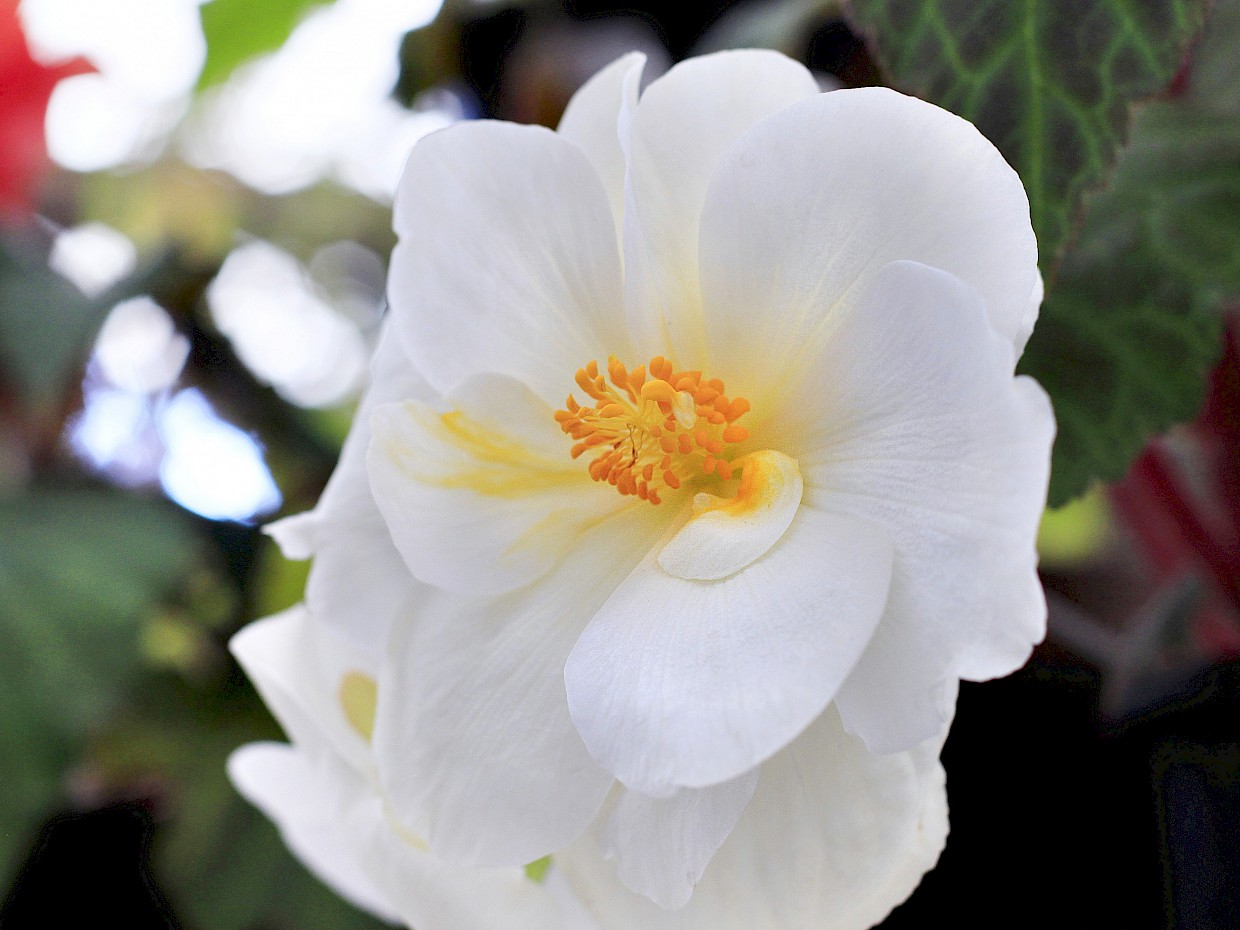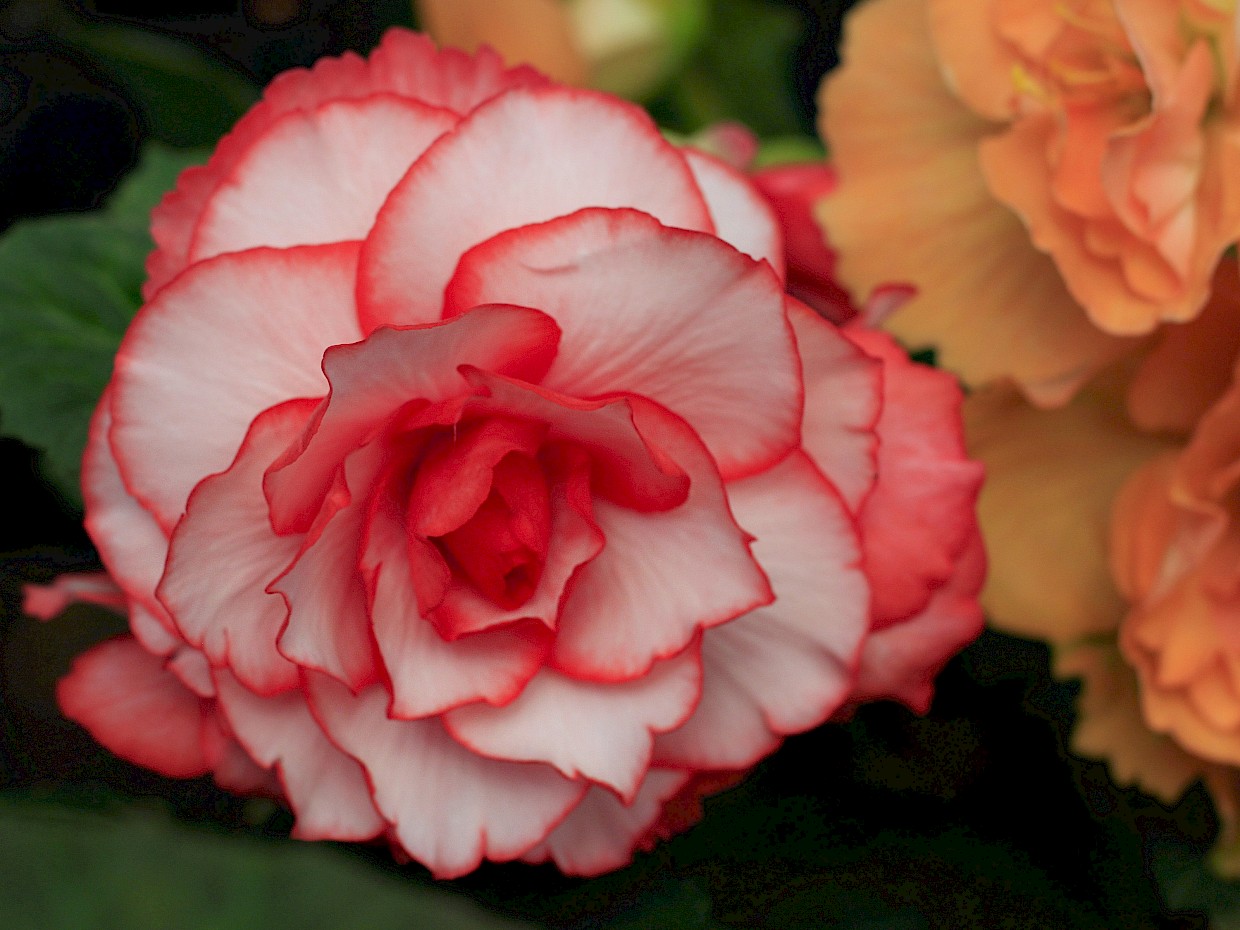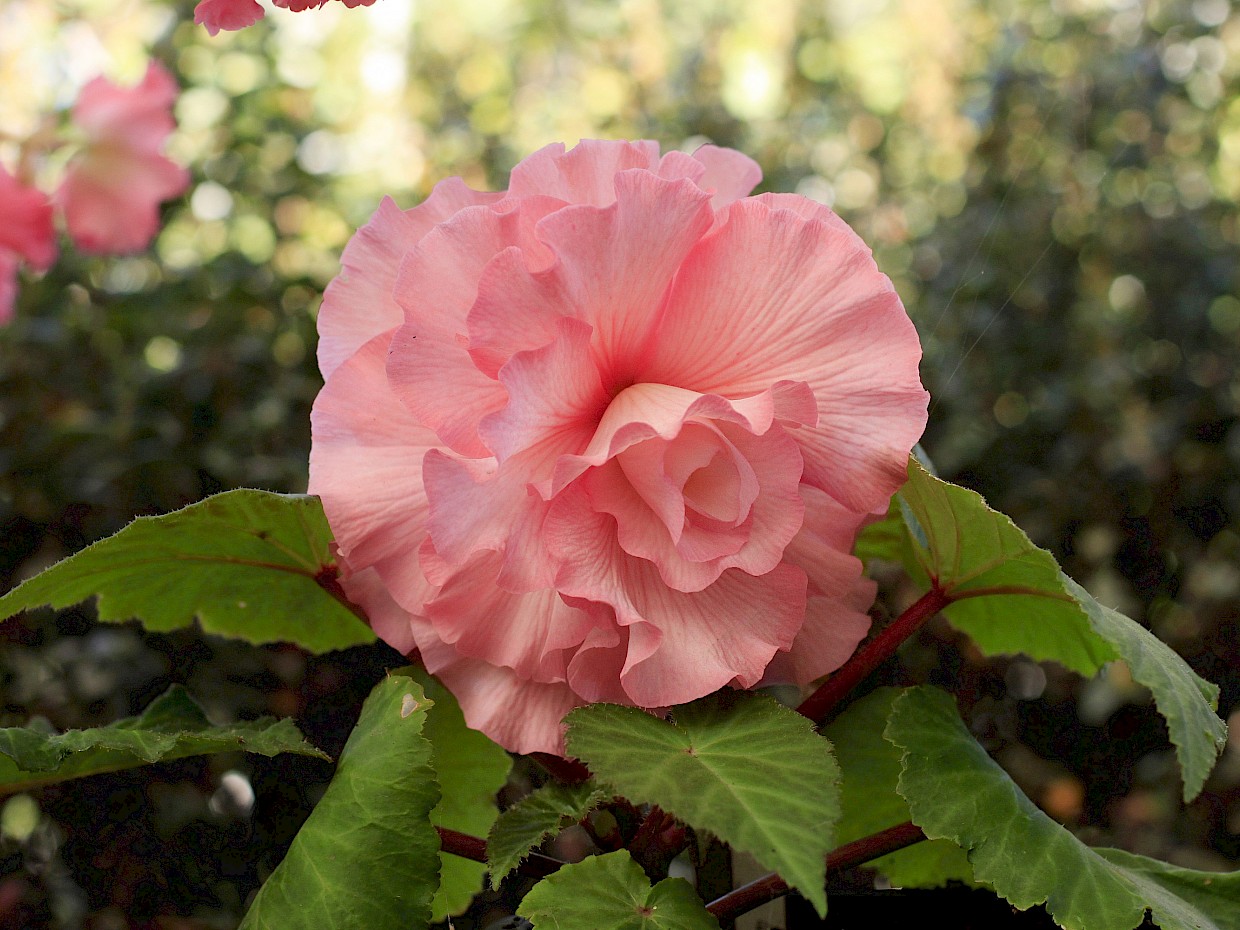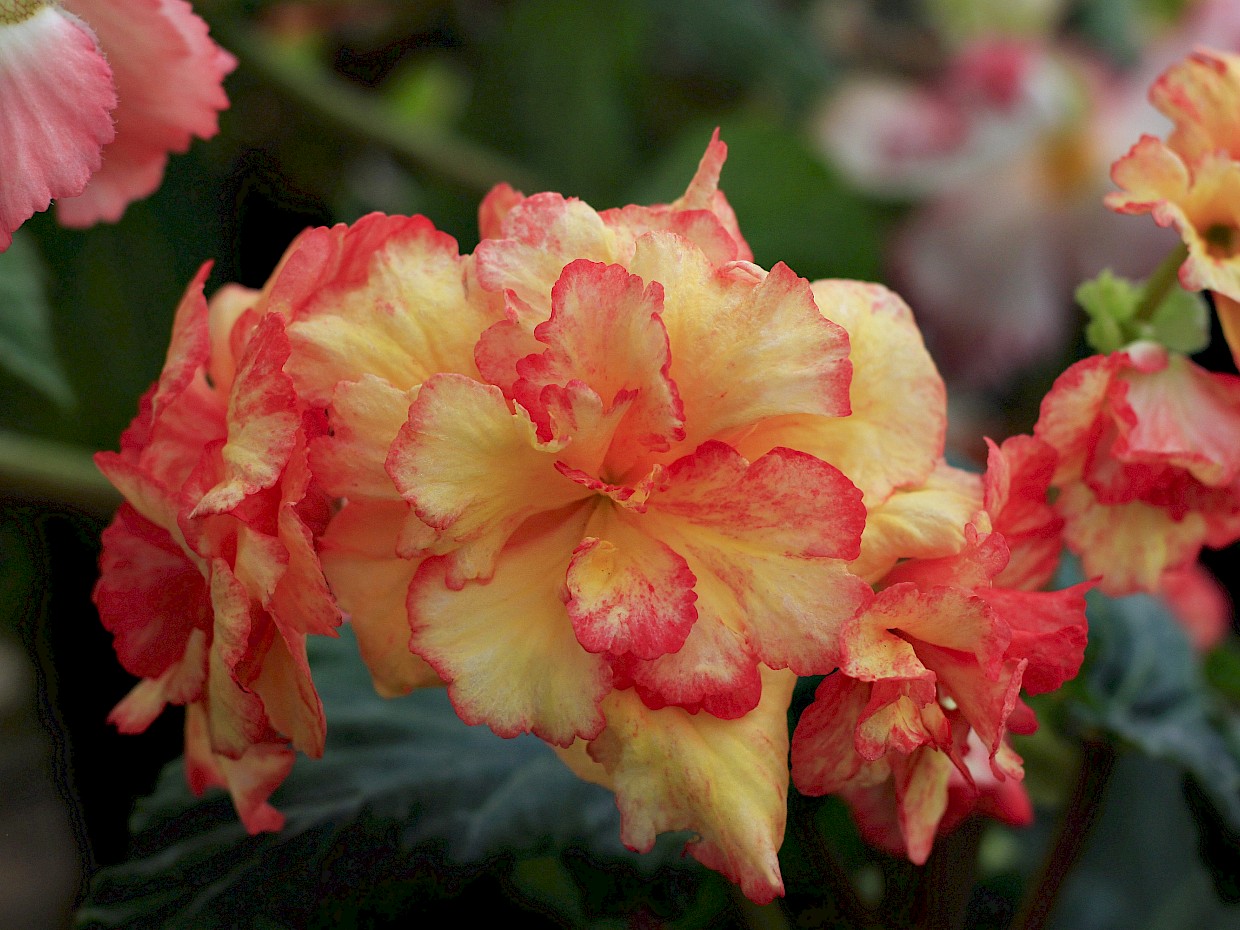Begonias
Typical bloom time: June through October
This really is a floral show that begs close examination. The huge, showy begonia blossoms that can be seen in the Mae E. Lauer Display House during the summer and autumn at Mendocino Coast Botanical Gardens vary wildly in color, shape, and size. There are begonias with single and double blossoms, in addition to those that have ruffled petals or rose forms. Tuberous begonias grow from thickened, fleshy portions of underground stem (tubers). Our begonias range in color from solid creamy white flowers to some with pink or red edging (known as picotee types), to yellows, salmon, peachy pinks, and to red varieties.
There are thousands of begonia species from tropical and subtropical Africa, Asia, and Central and South America. During the 1880s, begonia species from South America began to pour into the Kew Gardens. Hybridizers in England and all across Europe began crossing different species, attempting to improve flower size and form, stem vigor, and disease resistance. By the 1890s, giant, single- and double-flowered cultivars and hybrids that hardly resembled the original begonia species were available. Their spectacular diversity is awe inspiring!
In the early 1900s, tuberous begonias were introduced to the United States, where they flourish in the mild coastal climate of central California. This climate is very similar to the native habitat of begonias in the highland valleys on the eastern slopes of the Andes Mountains. These equatorial, high-altitude regions have a very mild climate. The summers, from November to March, have high temperatures in the 60s and 70s and lows in the 50s and 60s. This is also the rainy season. The winter season in the Andes (June, July, and August) is very dry with high temperatures in the 50s and 60s. Freezing temperatures are very rare. Thus, with an almost identical climate, coastal California, and our garden, make an ideal home forour tuberous begonia collection.
HISTORY OF OUR COLLECTION
Tuberous begonias have had a long history at the Gardens. The first displays were provided by MCBG founders Ernest and Betty Schoefer in the 1960s. In the late 1980s local hybridizer, Howard Seibold introduced a selection of fragrant cultivars. In 1994, one of the Gardens' long-time volunteers Mae Lauer donated 100 red and orange hybrids. MCBG staff curator, Mario Abreu expanded the collection to include rose, ruffled picotte, and camellia forms with the diversity of peach, apricot, salmon, and yellow.
To see more photos of our beautiful Begonias, visit the Photo Gallery.
Next: Dahlia Garden »
« Previous: Native Plants


